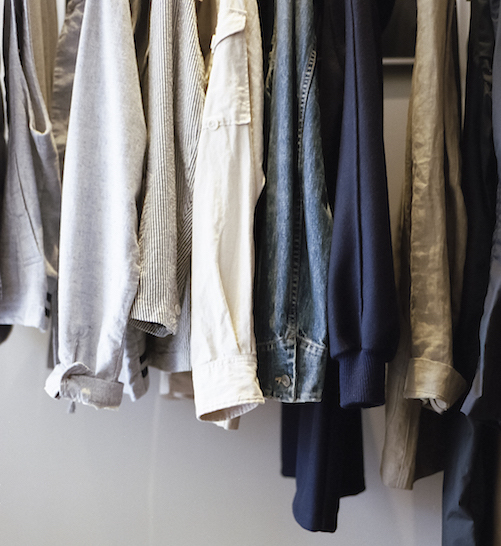Let It Go: A Minimalism Guide to Deciding What You No Longer Need

Minimalism: You’ve seen the word popping up everywhere from Facebook and Netflix to texts from your friends, but you’re afraid to admit you’re not exactly sure just what the heck everyone’s talking about. That’s OK – in just a matter of minutes, you’ll be on your way to becoming a minimalist guru!
Minimalism is a philosophy and practice that is growing across the world as people strive to live more meaningful lives with less material items. Minimalism isn’t a radical approach, and despite what you might have heard, it does not advocate getting rid of everything you own. Minimalism does encourage us to take a look at how our possessions may actually be crowding out the joy and happiness in our lives.
At its essence, Minimalism is a practical focus on what we really value, rather than on consuming and maintaining stuff that we do not use or need. Determining what is truly valued is a personal endeavor, which means Minimalism takes on a different meaning for different people. Yet there is one core aspect: Minimalism is not about having less. It is about finding more — more gratitude, more meaning, and more family and friend time. It is not about depravation or haphazardly getting rid of things. It is about building a life where the “beautiful enough” creates space for what you really value. By decluttering your life, you can clear a path to happiness.
Who has embraced Minimalism? Families, singles, doctors, teachers, artists, psychologists, bankers, architects, and more. People from all walks of life and economic backgrounds are exploring and practicing Minimalism in their own way. Some reduce the number of possessions to a bare minimum and some reduce what they maintain to a livable standard for their unique lifestyle.
There are no hard and fast rules to Minimalism. It starts with recognizing the impact of clutter in your life and choosing to let go of what you no longer value. This letting go can take the form of donating to worthy causes, like the Vietnam Veterans of America. What a great way to not only improve your own life, but those of others in your community!
Study after study has proven that having more things do not make people happier. In fact, the constant striving for more can cause discontent and depression. Why are lottery winners unhappy? Why do both the wealthy and less well-off among society experience dissatisfaction with their lives? Minimalism suggests that all our possessions do not necessarily bring meaning to our lives, and things we no longer use definitely do not add value. Generally speaking, we enjoy the best standard of living in generations, but at the same time we experience a constant craving for something more. It may be time to take a look at how you too can let it go, add value to your life and the lives of others by using simple Minimalism principles.
Now let’s take a look at how Minimalism works, as explained by “The Minimalists,” Joshua Millburn and Ryan Nicodemus. The pair have helped more than 20 million people “live meaningful lives with less” through their advice-filled website, podcast, and a hugely popular Netflix documentary, “Minimalism.”
Joshua and Ryan say that the average American home has about 300,000 items! Could they possibly be right? Take a walk through your own home and storage spaces and it will be easy to see how that number could very well be possible. It’s easy to forget all of the kitchen gadgets, clothing, toys, books, keepsakes, bathroom supplies, electronics and yard tools we have all collected through the years. Joshua and Ryan encourage us to consciously determine which of our possessions are of real value and serve a purpose. They remind us that holding on to items that do not have value or provide a purpose can burden your life; charity donation pickup services like Pickup Please offer an easy way to release what you no longer want.
So why is it so challenging to just let something go? Sometimes we do not let go because of memories that are attached to an item; sometimes we believe that we may need it again someday, or we just don’t want to be wasteful. Because each of these reasons are valid, the Minimalists suggest the following reasoned approach to determining what we really value, so that we can reclaim our space and ultimately our life:
- Review your closets, toy rooms, shelves, pantries, garages, and other storage areas. Ask yourself if these areas are over-flowing and cluttered. Ask yourself, “Do these areas give me a sense of happiness and calm, or do they generate discontent and a feeling of chaos?”
- Determine what items that you have not used for six months or longer. These items include clothes, toys, books, kitchen items, tools, household goods, and the like.
- Handle each item and ask yourself, “Does this item bring value to my life and does it serve a purpose?” If the answer is yes, keep the item. If the answer is no, ask yourself “Would this item be of value to someone else?” Should that answer be yes, add it to a donation box or bag.
- Continue this process in each of your storage areas until you experience the sense of happiness and calm that you seek.
- Then just “let it go” by scheduling your donation pickup with Pickup Please. Instructions on how to donate can be found below.
Now you can enjoy your reclaimed spaces and find more time to enjoy the important things in life — happiness, friends, and family!
Minimalism is one way to “let it go” and find a more fulfilling life. Donating your items to support our nation’s veterans is an amazing way to add the value of gratitude and a sense of happiness to your life. Feeling happy and grateful by giving to others is a Minimalist way to maximize the love in your heart!
America’s Best Donation Pickup Program



